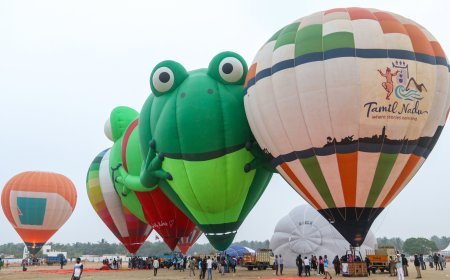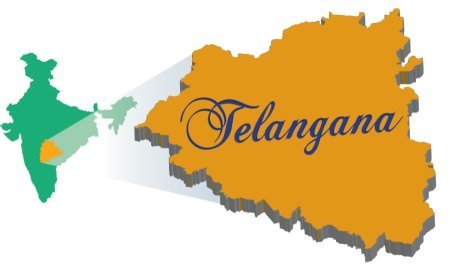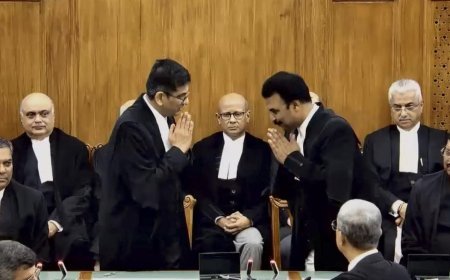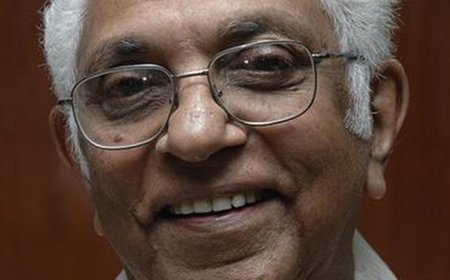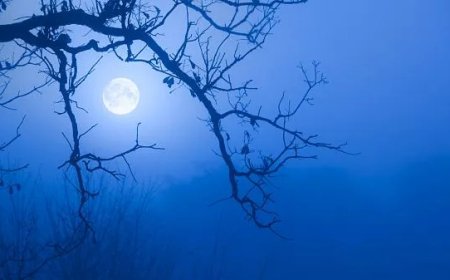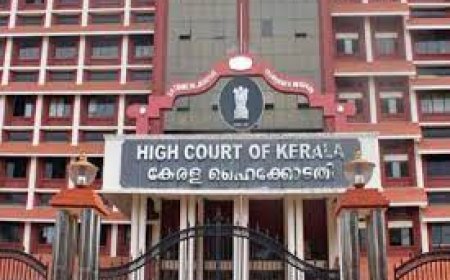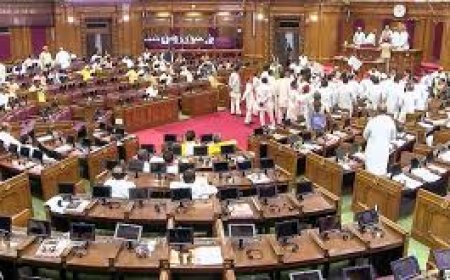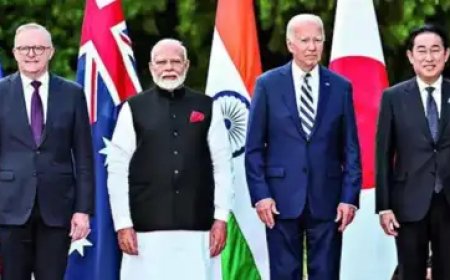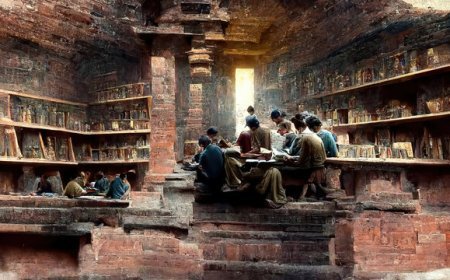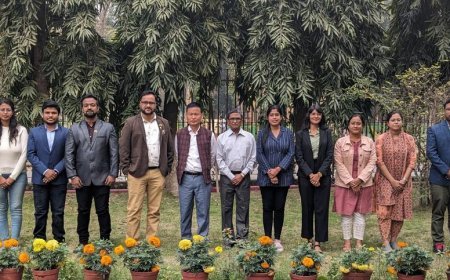June 2024: A Roundup of HISTORY & CULTURE News

10th International Yoga Day (IYD)
- Date: Celebrated on June 21, 2024, marking the 10th anniversary of International Yoga Day.
- Significance: The day highlights the importance of yoga in promoting physical and mental well-being. The United Nations proclaimed June 21 as International Yoga Day in 2014, following a proposal by Prime Minister Narendra Modi.
- Activities: Various events, including mass yoga sessions, seminars, and workshops, were organized globally. The theme for the year focused on "Yoga for Wellness," emphasizing yoga's role in holistic health
UNESCO ‘City of Literature’
- Kozhikode: Recently declared as India’s first UNESCO ‘City of Literature,’ Kozhikode in Kerala earned a place in the UNESCO Creative Cities Network (UCCN) in October 2023.
- Cultural Heritage: Kozhikode, known for its rich literary culture, was chosen over other culturally rich cities like Kolkata. It has a vibrant tradition of literature and numerous well-functioning libraries.
- New Initiatives: The Kerala government launched initiatives such as ‘City of Literature Day’ on June 23 and various literary awards to promote and celebrate literary contributions
Srinagar Gets Tag of ‘World Craft City’
- Recognition: Srinagar became the fourth Indian city to be recognized as a ‘World Craft City’ by the World Craft Council (WCC).
- Craft Heritage: The recognition highlights Srinagar's rich craft heritage, including traditional crafts like Pashmina shawls, papier-mâché, and intricate woodwork. These crafts have significant cultural and economic importance in the region
Raja Parba Celebration
- Festival: Raja Parba, an agricultural festival of Odisha, was celebrated in Rashtrapati Bhavan with President Droupadi Murmu in attendance.
- Significance: The festival, celebrated from June 14 to 16, marks the onset of the monsoon and honors the fertility of the earth. It involves various cultural activities, traditional games, and rituals.
- Traditions: The festival's name, derived from 'Rajaswala,' symbolizes a menstruating woman. It includes applying medicinal paste on brothers by sisters and giving a ceremonial bath to the earth goddess, Bhudevi
Renaming of Joshimath and Kosiyakutoli
- Government Approval: The Indian government approved the renaming of Joshimath tehsil to Jyotirmath and Kosiyakutoli tehsil to Pargana Shri Kainchi Dham tehsil.
- Significance: The renaming aims to honor the spiritual and cultural heritage associated with these places. Jyotirmath is a significant pilgrimage site, while Kainchi Dham is renowned for its spiritual significance and attracts numerous devotees
Kheer Bhawani Mela
- Festival: An annual festival celebrated by Kashmiri Hindus on Zeisht Ashtami, dedicated to the goddess Ragnya Devi.
- Location: The main celebration takes place at the Kheer Bhawani Temple in Tulmulla, Ganderbal, near Srinagar.
- Significance: The festival is marked by the offering of kheer (milk and rice pudding) to the goddess. It is the largest Hindu gathering in Kashmir after the Amarnath Yatra, with participation from both Hindus and Muslims
Annual Ambubachi Mela
- Celebration: The Ambubachi Mela is celebrated annually at the Kamakhya Temple in Guwahati, Assam, during the monsoon season.
- Significance: The festival symbolizes the annual menstrual cycle of the goddess Kamakhya, reflecting the fertility of the earth. The temple remains closed for three days, and on the fourth day, it reopens with a grand ceremony.
- Traditions: Devotees believe that the festival marks the rejuvenation of Mother Earth, and the temple attracts thousands of pilgrims during this period
Srinagar’s ‘World Craft City’ Tag Will Promote Global Links
- Context:
- Srinagar has been awarded the prestigious ‘World Craft City’ tag by the World Crafts Council (WCC), recognizing its rich cultural heritage and exceptional craftsmanship.
- Significance of Recognition:
- Awarding Body:
- The WCC, an NGO dedicated to promoting and preserving craft heritage globally.
- Cultural and Historical Importance:
- Highlights Srinagar’s significant contributions to the world of crafts and acknowledges the skill of Kashmiri artisans.
- Impact on Global Links:
- Reviving Traditional Linkages:
- Expected to strengthen Srinagar’s historical connections with Central Asia and Iran.
- Facilitates knowledge exchange and collaboration with other craft cities, including 14 in Iran.
- Enhancing International Presence:
- Positions Srinagar as a global center for traditional crafts, promoting cultural and artistic exchanges worldwide.
- Economic and Cultural Benefits:
- Cultural Recognition:
- Encourages the preservation and promotion of traditional Kashmiri crafts.
- Economic Boost:
- Likely to increase international demand for Kashmiri crafts, attracting tourists and buyers, thereby boosting the local economy.
- Empowerment of Artisans:
- Provides a global platform for Kashmiri artisans to showcase their skills, enhancing opportunities for training and market access.
- Summary:
- The ‘World Craft City’ tag for Srinagar underscores its rich cultural heritage and the exceptional craftsmanship of Kashmiri artisans. This recognition is expected to revive traditional linkages, enhance global presence, and provide significant economic and cultural benefits.
An Ancient Centre of Learning
- Context:
- Nalanda University, renowned as the first international residential school, has a rich history dating back to the times of Buddha and flourished significantly from the 5th to the 12th century CE. The new campus was inaugurated by Prime Minister Narendra Modi, symbolizing a revival of its ancient legacy.
- Historical Background:
- Establishment:
- Founded in the 5th century CE by Emperor Kumaragupta.
- Promoted a syncretic learning experience for 700 years.
- Renowned Scholars:
- Home to masters like Nagarjuna, Aryabhatta, and Dharmakirti.
- Hosted 2,000 teachers and 10,000 students at its peak.
- Curriculum and Influence:
- Taught subjects like Buddhist scriptures, philosophy, theology, metaphysics, logic, grammar, astronomy, and medicine.
- Attracted scholars from China, Korea, Japan, Tibet, Mongolia, Sri Lanka, and Southeast Asia.
- Rediscovery and Revival:
- Rediscovery:
- Rediscovered in 1812 by Francis Buchanan-Hamilton and officially identified in 1861 by Sir Alexander Cunningham.
- Revival Efforts:
- Proposed by Dr. A.P.J. Abdul Kalam in 2006, with support from various countries and East Asia Summit leaders.
- Nalanda University Act passed in 2010, with the first batch of students enrolled in 2014.
- New Campus and Infrastructure:
- Master Plan:
- Designed by B.V. Doshi’s Vastu Shilpa Consultants at an initial cost of ₹1,800 crore ($210 million) over 485 acres.
- Sustainable Features:
- Carbon footprint-free Net-zero campus with water bodies, solar plant, water treatment, and recycling facilities.
- Inauguration:
- Attended by ambassadors from 17 countries, reflecting original monasteries’ architecture.
- Academic Programs and Governance:
- Offers Post Graduate and Doctoral programs in Buddhist studies, philosophy, languages, ecology, sustainable development, and international relations.
- Significance:
- Cultural and Historical Legacy:
- Symbolizes India’s ancient educational excellence and global influence.
- Modern Educational Impact:
- Revival aims to restore Nalanda’s status as a global center for learning, attracting international students and scholars.
- Summary:
- The revival of Nalanda University with a new campus underscores its historical significance as an ancient center of learning. This initiative aims to restore its global educational status, fostering cultural exchange and enhancing modern educational impact.
Art Empowers Villages in a Once-Troubled Part of Bengal
- Context:
- Art initiatives are empowering villages in Bengal, transforming once-troubled areas into hubs of cultural and economic activity.
- Cultural Revival:
- Traditional art forms, including painting and craftwork, are being revived, providing new opportunities for local artists.
- Economic Impact:
- Art initiatives are creating jobs and promoting entrepreneurship, helping to alleviate poverty and improve living standards.
- Community Engagement:
- Local communities are actively involved in cultural projects, fostering a sense of pride and ownership.
- Tourism Boost:
- The revival of traditional arts is attracting tourists, further contributing to the local economy.
- Summary:
- Art initiatives in Bengal are revitalizing local communities by preserving cultural heritage and boosting the economy. These efforts are transforming once-troubled areas into vibrant cultural and economic hubs.
Theyyam - The Tribal Cultural Dance
- Context:
- Theyyam, also known as Kaliyattam or Theyyamkettu, is a vibrant ritualistic art form indigenous to northern Kerala, specifically the Kolathunadu area comprising Kasaragod, Kannur, Wayanad, and Kozhikode districts.
- Historical and Cultural Context:
- Origin and Evolution:
- Traces its origins to ancient tribal rituals and animistic beliefs.
- Evolved into a complex ritual art form integrating dance, music, mythology, and folklore.
- Geographical Spread:
- Practiced in northern Kerala and resonates in the Tulunadu region of Karnataka as 'Bhuta Kola'.
- Spiritual and Ritualistic Dimensions:
- Role and Significance:
- Serves as a conduit for spiritual expression, embodying deities, spirits, or ancestral heroes.
- Community Cohesion:
- Reflects and reinforces the ethos, values, and communal bonds in agrarian societies.
- Socio-economic Impact:
- Livelihoods and Economy:
- Contributes to the local economy through tourism and cultural industries.
- Provides livelihoods for performers, musicians, costume makers, and artisans.
- Cultural Preservation:
- Plays a pivotal role in preserving tribal cultural heritage and transmitting traditional knowledge.
- Ecological and Environmental Context:
- Sacred Groves (Kaavu):
- Ritual performances often take place in sacred groves, serving as biodiversity hotspots.
- Ecological Wisdom:
- Theyyam narratives incorporate ecological knowledge and sustainable practices, promoting harmony with nature.
- Significance:
- Cultural Heritage and Identity:
- Embodies Kerala's cultural heritage, preserving oral traditions, myths, and legends.
- Contemporary Relevance:
- Continues to evolve, gaining national and international recognition.
- Summary:
- Theyyam stands as a testament to Kerala's cultural richness and spiritual depth. It serves as a dynamic cultural phenomenon that bridges the past with the present, preserving tribal heritage and promoting ecological wisdom.
Golconda Fort - The Impenetrable Fortress
- Context:
- Golconda Fort, derived from the Telugu word 'Golla Konda' meaning shepherd's hill, is a historic fortress located in Hyderabad, Telangana.
- Historical Background:
- Early History:
- Originally ruled by the Kakatiyas and later fortified and expanded under the Bahmani Sultanate from 1363 AD onwards.
- Qutb Shahi Dynasty:
- Sultan Quli Qutb-ul-Mulk founded the Qutb Shahi dynasty in 1518 AD and established Golconda as the capital.
- The Qutb Shahi rulers were patrons of Deccani and Telugu literature.
- Architectural Features:
- Fortifications:
- Features a robust three-tiered fortification with a moat and eight entrance gates, including Fateh Darwaza and Moti Darwaza.
- Significant Structures:
- Jama-e-Masjid, Taramati Mosque, Baradari (Darbar Hall), and Aslah Khana (Armoury).
- Water Management:
- Advanced hydraulic engineering with reservoirs and cisterns ensuring a steady water supply.
- Preservation Challenges:
- Faces challenges in preservation due to age, natural elements, and tourism impact.
- Significance:
- Cultural Heritage:
- A testament to the rich cultural and architectural heritage of the Qutb Shahi dynasty.
- Tourist Attraction:
- Attracts tourists and historians, offering insights into medieval Indian fortification and lifestyle.
- Summary:
- Golconda Fort remains a symbol of Hyderabad's historical legacy, blending military architecture with cultural richness. It continues to inspire admiration and study, highlighting its historical and architectural significance.
Vellore Fort: The Great Garrison of South India
- Context:
- Vellore Fort, known as "the iron throne of South India," has been a seat of power for various dynasties, including the Pallavas, Cholas, Marathas, Bijapur Sultans, and Arcot Nawabs. Located in Vellore, Tamil Nadu, it is a significant historical and architectural landmark.
- Historical Background:
- Early History and Construction:
- Built in 1556 AD by Chinna Bommi Nayak and Timma Nayak under the Vijayanagar Empire.
- Became a pivotal center during the Vijayanagar rule and saw strategic importance during battles like the Battle of Toppur.
- Under Various Dynasties:
- Used as a military base during conflicts with the Bijapur Sultanate and later captured by the Marathas and Mughals.
- Became a major garrison under the British East India Company from 1799 until Indian Independence in 1947.
- Vellore Mutiny (1806):
- Significance:
- First significant mutiny by Indian soldiers against the British.
- Occurred due to discontent over new regulations and turbans imposed by General Agnew.
- Led to a brief, violent uprising within the fort, though it was swiftly suppressed by the British.
- Architectural Significance:
- Medieval Architecture:
- A classic example of medieval architecture in South India, primarily built of granite.
- Structures Inside the Fort:
- Jalakanteswara Temple, Tipu Mahal, Begam Mahal, Khandi Mahal, St John’s Church, Mosque, and Archaeological Museum.
- Tourist Attractions:
- Local Attractions:
- Sripuram Golden Temple, Muthu Mandapam, Amirithi Zoological Park, and Armamalai Cave Paintings.
- Location and Accessibility:
- Centrally located in Vellore city, accessible via road, rail, and air.
- Summary:
- Vellore Fort stands as a testament to the rich history and architectural heritage of South India. It has witnessed centuries of political upheaval and cultural evolution, serving as a major tourist attraction and a reminder of India's historical resilience.
What's Your Reaction?










